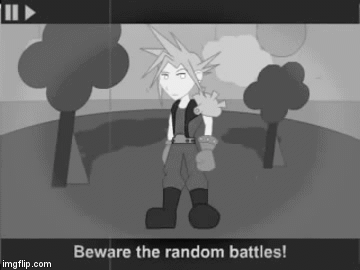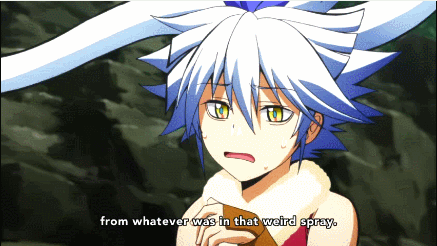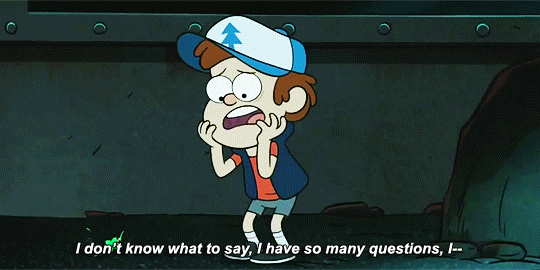Corinne Morier's Blog, page 5
September 22, 2019
Book Review: Girls of Paper and Fire
 Girls of Paper and Fire by Natasha Ngan
Girls of Paper and Fire by Natasha Ngan
My rating: 4 of 5 stars
It took me a while after finishing this book to figure out how I feel about it. Four stars, I think.
Lei is a human girl who is one day ripped from her home (I’ll come back to this) to be a Paper Girl… that is, a concubine for the Demon King. She and eight other girls will live in the palace, and for a year, will be at the Demon King’s beck and call, until next year, when a new batch of girls is chosen. But Lei starts a forbidden romance with another of the Paper Girls, and in the process, discovers a plot to have the Demon King assassinated. She becomes embroiled in the political struggle, and if the assassination attempt fails, a war will break out and thousands of innocent lives will be put at risk.
Me starting this book:

OMG THIS COVER IS GORGEOUS AND THE WRITING IS GORGEOUS AND I JUST LOVE EVERY ASPECT OF THIS BOOK
Me at the halfway point:

I’m not squeeing like a fangirl over these two, but I do appreciate having a lesbian relationship in a non-European fantasy.
Me after finishing:

…I don’t get it.
To this book’s credit, it’s written in first-person present tense, which y’all know I do not like one bit. I will literally decide not to read a book solely based on the fact that it’s first-person present tense, though I do make exceptions for it in dystopian novels. And if you’re wondering why I don’t like first-person present tense at all one bit, it’s because it’s not only jarring, but ironically, I don’t get to know the character as much as if it had been in traditional third-person past tense. This book, while the writing wasn’t jarring, per se, did suffer from that–I don’t feel as if I know Lei as well as I should after spending 300+ pages with her than if I’d read this story with her narrating it to us in third-person past. And yet it took me like, twenty pages into this book to realize that it’s in the hated first-person present tense because I was so absorbed in the situation.
The TL;DR version of this review is that while it’s an enjoyable story at its core, I didn’t enjoy it as much because my editor brain kept saying “Well, what if it’s written this way instead” and I don’t like that in my reading experience. It also felt too derivative of other books that have come before it rather than trying to subvert any tropes or do anything new, and has some notable flaws. The long version follows below.
To start off with, why does Lei have to be “ripped from her home” to be the King’s concubine? The king, and all the guards, are hella stupid for thinking that “grab and run” is the best way to get a teenage girl to obey your orders. No. It would have been much more interesting for the General who took Lei from her home to tell her “By the order of the emperor, you are to be his concubine.” To keep the girls complacent, you have to first respect them as people. Give them a chance to obey orders first and then use brute force only if necessary. Let them think that they’re making the right decision to obey the King’s orders. Even though the King didn’t personally choose Lei himself, that would have still been interesting because then the General would have technically been lying to Lei, and then she could have found it out later and it could have been an interesting little subplot. Same with not letting the girls ever contact their families, through letters or anything. Let them write letters home to keep them complacent. Of course, read the letters before they go out and censor incoming and outgoing mail, but if they’re allowed to keep some connection with their families, they’re more likely to obey. This logistical stuff just defied logic and made me scratch my head and think “well, this story could be so much better if they just used PSYCHOLOGY”
The bit about each province sacrificing one girl (correct me if I’m wrong about this) reminded me a lot of the Hunger Games. In fact, I had to wonder if Ngan was inspired by The Hunger Games when she wrote this book because a lot of stuff just reminded me of that. Like at one point, Lei remarks that “there is a fire catching among us,” and it just made me think of this…

My editor brain also kept wailing about “OH IF THIS HAD ONLY BEEN EXPANDED UPON A LITTLE BIT MORE IT WOULD BE SO PERFECT” like how Lei at one point makes a “rude gesture” with her hand, but we aren’t told what sort of rude gesture it is, so it’s both a lost worldbuilding opportunity as well as unclear description: the reader can’t imagine what Lei is doing that’s rude. Or when Lei discusses her birth blessing with other women–either they should have told her what their blessings were or talked about them or she should have asked. This would have been great characterization for the side characters of the story and a great worldbuilding opportunity (do all young people feel the same anticipation as Lei does about opening her pendant? Were any of them disappointed by the word in their pendants?) because as this book stands now, the worldbuilding feels rather weak, and the side characters definitely needed more fleshing out. I don’t claim to be an expert on Malaysia, which is apparently where Ngan got her inspiration, but the setting and most of the names were Chinese (yes, I did minor in Chinese literature and history in college, so I know a fair bit about Chinese culture) and yet it felt rather weird to have Japanese names and words stuck here and there, such as Aoki (a common surname in Japanese, here used as a given name) or sake (Japanese rice wine). I don’t know, maybe rice wine was also drunk in China, too, but it just drew me out of the story. And all the side characters just meshed together into one entity–I literally couldn’t tell Eira from Himura from Lill. And Lill is apparently eleven years old, but we don’t actually learn her age until 250 pages in and she talks and acts like an older teenager, sometimes a grown woman, so there’s something. Other characters that needed more development were Mariko and Blue, who apparently were “best friends,” along with Aoki, who was apparently “best friends” with Lei. Neither of those friendships got any page time. And the demons weren’t characterized or described very well because I had a hard time imagining what they looked like, too–all I could imagine was whatever animal the demon was and it walked on two legs and wore clothing, rather than being some sort of original creation of the author’s own design. And Tien’s role in the story wasn’t clearly defined–I didn’t know if she was Lei’s stepmother, or nursemaid, or just an employee in the herb shop who Lei and her father viewed as a close family friend.
Speaking of derivative, at one point the girls are taking a class from a prophet-sightseer guy who is a bit flighty and peculiar who suddenly goes into a trance during a lesson and makes a prophecy about our main protagonist. Sound at all familiar? Well, if you guessed Professor Trelawney, you were correct!

And then there were just little logical inconsistencies here and there that drew me out of the story–at one point, the Demon King is telling Lei about the Sickness, and she admits to him that she’s never heard of it before (which she should, it’s safer that way) but then thinks to herself “Hmm, where have I heard that before, that strikes a chord of nostalgia in me as if I heard it long ago…”
BITCH YOU JUST OVERHEARD CHENNA TALKING ABOUT IT LIKE TWO WEEKS AGO WHAT ARE YOU STUPID
And that ending. Bout to spill some tea on this ish. If you don’t want to be spoiled for the end of this book, scroll down past this to the end of the review.
SPOILERS BEYOND THIS POINT: SCROLL DOWN QUICKLY IF YOU DON’T WANT TO BE SPOILED
Lei effectively kills the demon king by shoving a knife clean through his jugular vein and he lies on the ground with his neck pouring out blood for more than twenty minutes of story time. Then it turns out he’s not actually dead, on the very last page? It would have been better if that had been omitted from this book and saved until book two–Lei and the others are wondering who’s behind everything and then learn, the Demon King is actually alive! Then it wouldn’t feel like such bullfuckery.

SPOILERS ARE OVER NOW YOU CAN STOP SCROLLING
TL;DR: Yeah, this is a F/F romance with good LGBTQ rep taking place in a non-European fantasy world and both of those are good rep, but it still feels too much like it’s just following in the footsteps of books that came before it rather than subverting anything. That, combined with all the WTF moments throughout the story, leads to its four-star rating.
Final Thoughts
Regardless, I did enjoy this book, and I could even see myself rereading it sometime. And I do intend to pick up the sequel, as well, and get to it sooner rather than later.
You might also enjoy these other posts from me:
Year of Asian Stories: Grimgar of Fantasy and Ash
Year of Asian Stories: Red Winter by Annette Marie
Year of Asian Stories: A Tale for the Time Being
If you enjoyed this post and want to support my content:
Follow me on Twitter, where I’m most active
Subscribe to my Youtube channel, where I talk about more books than just one per week!
Follow my blog (click on that little blue box to the right that says “Follow The Discerning Reader”) to get updates in your inbox every time I post! And don’t forget to “like” and reblog this post using the buttons below so more people can find my site!
Make it a good week, everyone, and I’ll see you next Sunday!
Corinne 乙女
September 15, 2019
Year of Asian Stories: Grimgar of Fantasy and Ash
 Grimgar of Fantasy and Ash (Light Novel) Vol. 1 by Ao Jyumonji
Grimgar of Fantasy and Ash (Light Novel) Vol. 1 by Ao Jyumonji
My rating: 3.5 out of 5 stars
3.5 stars, I think. Not quite a three, but I didn’t enjoy myself as much as a four-star read would have been. Which is sad, considering that I had predicted this as a five-star read in my unreleased “Five-star Predictions” video.
To start off with, there were too many characters to keep track of. Admittedly, I did manage to get to know Haruhiro, our main protagonist, enough to connect with him, I also need to be able to connect with other characters in the story. If you’re like me and you need to be able to connect with your characters while reading a book rich in worldbuilding and characterization, this might not be the best book for you. I’d say if you’re a fan of action-y adventure stories and you don’t care so much about worldbuilding or characterization, then this is one you should read. Basically, this felt like a slice-of-life story, except that rather than random scenes of characters doing everyday things, it’s random scenes of characters fighting random battles.

This apparently got an anime adaptation and I’m rather curious about it because this story would definitely make a better anime than a book. I was expecting this book to be something like Maze Runner, where they wake up in a new place and not only have to survive, but they have to find out what happened to them, uncover their lost memories, and in the end, they have to decide between staying in this new world or returning to their old world. I say that having not read Maze Runner yet. Could be that the Maze Runner also doesn’t do this–if it doesn’t, someone should write this. But this book definitely did not do this.
If you are also someone who needs their stories to be well-edited and free of typos, then this also wouldn’t be a good book for you–there are more than a few typos here, and ones that detract from the story.
The jumps in time between chapters make the story feel really disjointed. For example, in one of the later chapters, we meet a character named Merry, who is cold and aloof with the other members of the party. They have a mini meeting of the minds, and Merry is like “Meh. I still don’t like any of you but I’ll heal you all the same.” Yet in the very next chapter, without any explanation, Merry is being all chummy-chummy with them at the tavern. Another example would be on page 103 of the paperback version, where, instead of Manato telling his comrades about the No-Life King and more information about the political climate of this world, allowing his comrades, and therefore us, to react to this new information, it’s instead presented as a huge infodump in a page and a half of block text.
And the fact that no one, not even after they’d begun earning a steady income and stabilized their new lifestyles, wondered until THE VERY LAST PAGE OF THIS BOOK about whether or not there was another world where they came from originally and what the secret was of this world, irritated me to no end. Sure, if you’re dropped into a new world and have to make do, you’d ostensibly put things like existential crises on hold until you’d nailed down what you’re going to eat, where you’re going to sleep, and how you’re going to make enough money to feed yourself, but once that’s all squirreled away (and in this book, that happened about chapter nine) you’d start to think about “Why am I here? Where did I come from? Why don’t I remember anything about my family or friends? Am I being punked?”
I still did enjoy this book, and at its core, this is a low-ish fantasy straight out of an MMORPG, and yeah, MMORPGs are one of my favorite kinds of games, so this was a fun read. But in the end, I was less interested in picking up the sequel than I was reading the Maze Runner or even logging onto my MMORPG and playing (which I actually haven’t done in a few months, I’ve been too busy.)
Final Thoughts
Regardless, I did enjoy this book, and I could even see myself rereading it sometime. And I do intend to pick up the sequel, as well, and get to it sooner rather than later.
This book was a part of my Year of Asian Stories challenge. You can view my full Asian Stories TBR blog post using the link below:
Year of Asian Stories Announcement
You might also enjoy these other posts from me:
Year of Asian Stories: A Tale for the Time Being
If you enjoyed this post and want to support my content:
Follow me on Twitter, where I’m most active
Subscribe to my Youtube channel, where I talk about more books than just one per week!
Follow my blog (click on that little blue box to the right that says “Follow The Discerning Reader”) to get updates in your inbox every time I post! And don’t forget to “like” and reblog this post using the buttons below so more people can find my site!
Make it a good week, everyone, and I’ll see you next Sunday!
Corinne 乙女
September 8, 2019
Book Review: Homeroom Diaries
 Homeroom Diaries by James Patterson
Homeroom Diaries by James Patterson
My rating: 4 of 5 stars
By all appearances, this would seem to be a light, fluffy contemporary with slice-of-life type situations and FRIENDSHIP!

Oh, boy, this book goes to some dark places. I’m going to preface this review with a trigger warning for both suicide and sexual assault because this book has both of these and I have things to say about those.
This book starts out rather hilarious; our main character, who insists upon being called “Cuckoo,” in honor of her brief stay in the mental hospital. Why was she admitted to the psych hospital, you ask? For crying too much.
This was one of my problems with this book, actually. Twice, once at the beginning and once at the end, the adults want to admit her, a sixteen-year-old hormonal teenager who’s just gone through some f*cked up sh*t, to a MENTAL HOSPITAL instead of, y’know, just TALKING TO HER and helping her in any way they can. In the beginning, it’s because her mother has abandoned her during a vital period of her life. At the end, it’s because SHE WAS SEXUALLY ASSAULTED AND IMMEDIATELY AFTERWARD HER FOSTER MOTHER DIED AND HER BEST FRIEND TRIED TO COMMIT SUICIDE. A girl’s allowed to shed a few tears after something like that happens.
Because of the unbelievable situation, I kept expecting some sort of great plot twist, like all the characters were just figments of Cuckoo’s imagination. And because I kept expecting the rug to be pulled out from under me in this way, not to mention the sheer number of characters and the fact that each of them had a nickname as well as a real name, I was unable to remember or connect with most of the characters in this story. And I’m the sort of reader who needs to experience the story right alongside the characters as if they’re real, actual people.
For example, at one point very early in the story, Cuckoo’s friends get mad at her for hanging out with and dancing with Marty. a boy she maybe-kinda likes. But at that point, Marty was just a blank slate to me, so their anger made no sense.
I did really enjoy Cuckoo’s voice in this book; it was engaging and hilarious. The illustrations make this a rather unique psuedo-graphic novel, and I could easily see myself rereading this in the future. In fact, I want to reread it right now as I’m writing this review. xD
Looking back on my notes from when I read this book, most of them, aside from the above issues, are just general reactions, like “HOLY SH*T MARTY JUST ASSAULTED HER!” or “Wow that got dark again real fast!” so maybe it’s not fair to dock an entire star just for those bits. But I don’t think I enjoyed this as much as I enjoyed some of my recent five-star reads. Maybe once I give this a reread, I’ll figure out how I really feel about it.

September 1, 2019
Book Review: Orange
 Orange: The Complete Collection, Volume 1 by Ichigo Takano
Orange: The Complete Collection, Volume 1 by Ichigo Takano
My rating: 5 of 5 stars
This manga was so good. I devoured the entire thing in one sitting.
On her first day of eleventh grade, Naho Takamiya receives a letter… from herself. The letter says that it’s from herself, ten years in the future, and gives detailed accounts of things that will be happening in the coming days. It also says that there will be a new transfer student joining their class named Kakeru, and Naho must follow the events in the letter in order to change Kakeru’s fate and save his life. At first, Naho doesn’t believe what the letter says, but as the first few days of her junior year go by and real life matches what the letter says, she starts to believe. What can Naho do to save Kakeru, or is she already too late?
This book had such a great group of friends. You can clearly tell they have an established history together, they each have their own personality, and they all interact as if they’ve been besties for a long time. I am TRASH for good friend groups in fiction, so this was a really great aspect of the story for me.
I also really enjoy stories about time travel, for some reason. Especially time travel with a school setting. One only has to look at my favorite light novel series The Melancholy of Haruhi Suzumiya, which is a school-based story with a strong time-travel element. And this one does not disappoint. It doesn’t just present the letter as the jumping-off point for the plot, but shows us short scenes of the future Naho and how her life is now; though she’s technically living a good life, she still regrets not saving Kakeru when she could. She’s married with a child, which both introduces a love triangle (she married another guy from their friend group, and she’s implied to have a gigantic crush on Kakeru during the school scenes) and a more ethical dilemma. If she does manage to save Kakeru, would that also change her own future? Like, would she no longer be married to her husband in the future and her child would no longer exist? Or is it a case of parallel timelines, as is presented during the story–even if Naho manages to save Kakeru in her time, it won’t save Kakeru in the timeline that future Naho sent the letter from, but rather, it will just create a new timeline? (think along the lines of the multiverse theory: when there is two outcomes from one instance, ex. someone deciding whether to have sushi or pasta for lunch, two universes are created, both identical except for the fact that in one universe, the person decided to have sushi, and the other universe, the person had decided to eat pasta. Really a very fascinating subject that I have recently developed an interest in.)
In fact, during the second half of the book, we stop seeing scenes from the future Naho’s timeline. That left me wanting to know what happened to future Naho, but also seemed to be dropping hints as to the present Naho having changed the timeline enough to have affected the future Naho’s existence. Guess we’ll just have to wait and see in volume two which I NEED NOW GAAAH *runs off to Amazon*

August 25, 2019
Book Review: Dragon Rider
 Dragon Rider by Cornelia Funke
Dragon Rider by Cornelia Funke
My rating: 5 of 5 stars
So good! I predicted it would be five stars going into it and it was!
I love Funke’s books. I read The Thief Lord a long time ago and loved it. I remember reading the Inkheart trilogy as well as this book a while ago, as well, but I didn’t remember what happened in any of them. I still own my copies of Inkheart, Inkspell, and Inkdeath, but had to buy myself a new copy of this one (luckily I found one for $1 at the used bookstore!).
Firedrake is a young dragon who sets out with his brownie friend Sorrel to find a new home for his dragon clan. His destination is the Rim of Heaven, a legendary valley that used to belong to the dragons, to find the last place on Earth that has been untouched by humans. Along the way, they meet a human boy Ben who is all alone in the world. Following the clues, they set out to find a djinn, get advice from a rat, and meet a monk on a legendary monastery, all while evading the pursuit of Nettlebrand, a monster of old who hunts dragons, and his servant Twigbranch, the world’s last homonculus.
I don’t really know what else I can say about this book. It’s funny, it’s cute, it’s enjoyable, and a good, solid read. There’s a good amount of characters in this book, enough so that you’ll be guaranteed to find ones you like, even if there’s others you don’t like as much. but not so many that it could give Game of Thrones a run for its money. xD
Of all the characters in this book, I’d have to choose Sorrel and Twigbranch as my favorites. Sorrel is a brownie, which I’d never even heard of before reading this book. From what I can tell, brownies are mythological creatures who are essentially the household version of the shoemaker’s elves: they come out at night while the owners of the house are asleep and perform various household tasks. Ironically, while her species is said to be helpful to humans, Sorrel prefers helping Firedrake and the dragons and takes a long time to warm up to the human Ben. She provides sarcastic quips and comebacks to what other characters say and do and is definitely the funniest character in this book. Meanwhile, Twigbranch is a homonculus, a creature created by alchemy to serve the big baddie (name redacted to avoid spoilers). His character arc is predictable, given the story’s progression, but definitely enjoyable. (again, trying to avoid spoilers here)
I know you guys mainly came here for the GIFs, so here you go.
Firedrake offering to search for the Rim of Heaven to save his friends

Firedrake and his friends defeating the big baddie (oh, come on, it’s a kid’s book, you know it has a happy ending)

Sorrel anytime she opens her mouth

Basically the theme of this book

All right, all right. That’s enough references, go read this book already!

August 18, 2019
Book Review: To Court a Queen by HL Burke
 To Court a Queen by H.L. Burke
To Court a Queen by H.L. Burke
My rating: 4 of 5 stars
To Court a Queen by H.L. Burke is a novella that I was expecting to be a five-star read but had some disappointing aspects to it.
Author love
Burke is one of my favorite authors, and a very prolific one at that. She releases a new book something like every six months to a year. Though this works in her favor in terms of the Amazon algorithm and whatnot, I feel like this book especially was rushed.
Devin doesn’t want to marry the fairy queen… but he wants to be a frog even less.
For those who are fans of Moreci’s The Savior’s Champion or Collins’ The Hunger Games, this might be an interesting book for you to pick up. Our main character Devin gets kidnapped by the fairy queen and has to go through three trials to win her hand or else lose his life or be turned into a frog, depending on her whims. All the while he’s got a forbidden romance going on with a servant girl and would much rather marry her, instead.
Religious undertones
As is typical of Burke’s writing, and of many other indie authors I’ve read, our main character prays to God at more than one point in the story. I am neither condoning nor praising this decision by the author–this was entirely her prerogative and she had every right to give the character whatever religious beliefs she would like. However, as an atheist, these moments were a bit distracting for me because I couldn’t connect with Devin’s faith.
Editor brain
Because I am also an author, I have a hard time turning off my “editor brain” when reading a book. Of course, there are many books out there that keep me engaged from the first to the last page and never once do I stop to think about “How would I tell this story instead?” Alas, after the first few chapters, my editor brain kept butting into my reading experience.
For example, the writing. The prose in this book isn’t necessarily the strongest; her other books definitely have prettier prose. Devin continues to remark on Sevaine’s “rarified accent,” but his dialogue and Sevaine’s read exactly the same to one another, which reads exactly the same as all the other fae characters’ dialogue in the story. A reader should be able to tell, without context or dialogue tags, who is speaking at any one point in the story, and that unfortunately didn’t happen for me.
Worldbuilding
Some solid worldbuilding again from Burke. Like her other fantasy novels, this one has an immersive world that draws you in, though there were some jumps in internal logic.
One that really bothered me was on page 34 when Sevaine asks Devin about the cross hanging around his neck. Of course, this was to set up the idea later that the iron chain on the cross could be used to aid him later, which I think was brilliant, but on page 35, Sevaine remarks, “You’d save God knows how many lives,” when the entire exchange with Devin implies that she doesn’t have the same concept of the Christian God that Devin does. I kept wishing that Burke would take this one step further and explore whether or not the fae have a god of some sort, especially after another fae makes a remark similar to hoping that the Creator would help Devin. Without any context, this just feels like repurposing modern-day Christian-esque language rather than a prayer that originates within the fae’s culture.
Another example is that Sevaine mentions that she is a felyn, which is a species of fae, according to her. She also explains that the fae are unable to comprehend sarcasm, which I thought was a really cool concept. Then, a few pages later, she points out that Devin keeps using sarcasm and he needs to change his sarcastic tone. If she’s also a species of fae, wouldn’t she be unable to recognize that he’s using sarcasm? In addition, here and there she makes a few remarks that could be taken as sarcasm–aren’t fae unable to use or understand sarcasm, according to her? The lines between fae and felyn weren’t clear, leading to my confusion on this issue.
The romance
Despite all my problems with this book, it might have still been able to earn a five-star rating. But the romance was just so cringeworthy. Devin keeps calling Sevaine a cat-elf and making references to cats, even when she keeps asking him to stop. She’s a tropey damsel-in-distress who has to be rescued several times by him, and she likes him, why? Because he keeps rescuing her? It felt more along the lines of they were attracted to each other because the plot called for it, not because of any sort of organic romantic connection. All the way through I was just not rooting for the romance, especially considering that other books I’ve read by Burke have left me squeeing over the romantic relationship that was developed over the course of the story. I wanted to finish this story squeeing over Devin and Sevaine’s happy ending and I just couldn’t bring myself to ship it.
In conclusion
Despite all my problems with it, this novella still earns a four-star rating from me. It’s a fun read for the price and I could see myself rereading it sometime in the future.
This book has

August 11, 2019
Book Review: The Magician’s Nephew
 The Magician’s Nephew by C.S. Lewis
The Magician’s Nephew by C.S. Lewis
My rating: 4 of 5 stars
Before Lucy discovered the wardrobe in the Spare Room that led her to Narnia, there was a boy whose uncle was obsessed with going to another world.
When Digory’s friend Polly is tricked by Digory’s Uncle Andrew and sent to another world, it’s up to Digory to chase after her and bring her back. But once they arrive in the other world, the temptation to explore is just too much. They discover a kingdom trapped in time, and foolish Digory releases an ancient Witch from her eternal sleep. The only way he can save the newly-created world of Narnia is to fetch a magic apple and plant the seeds among the talking beasts.
This is a really cute story that takes very little time to read. If I were a nine-year-old girl, I might have enjoyed having this story read to me at bedtime, one chapter every night, like how my mom used to read me Harry Potter every night before I went to sleep. Alas, I am a twenty-eight year old woman, and this book has a few head-scratching moments in it.
Initial thoughts
A young man who lives with his uncle and goes on an adventure far from home with a magic ring playing a major role in his ability to do certain things… hmm, where have I heard that one before?

indeed, if you enjoyed Tolkien’s middle-grade fantasy adventure The Hobbit, then you would most likely also enjoy The Magician’s Nephew.
Worldbuilding
The worldbuilding in this book is solid, and also quite enjoyable. If you are someone who needs a fantasy book to have gorgeous, extensive worldbuilding, then Magician’s Nephew is a good one for you to read.
Illustrations
Unlike my previous read, Red Winter, the illustrations in this book aren’t anything to sneeze at. However, they do help in comprehension of the overall story and are rather pleasant to look at.

The protagonist is an idiot
Literally all of this book happened because Digory is an idiot and had to go poking his nose where it doesn’t belong. He gets to the other world and finds Polly with no trouble. Then, instead of going back home, they had to go poking around in another world and wake up a terrible thousand-year-old evil, which wreaks havoc for two more books before finally being quashed.

The Beginning
To this book’s credit, the beginning is not at all slow like some classics. It jumps right into the actions: after a few pages of “Meet Digory, and meet Polly, and they’re neighbors and Digory has an Uncle Andrew,” (and by “a few pages,” I literally mean four pages), before they’re meeting Uncle Andrew and he whisks Polly away to the In-Between world. Of course, some readers might not enjoy that, because they like their characters well-developed before heading into the adventure proper, but we get plenty of character development along the way.
…except for the important part: the friendship between Polly and Digory. Sure, Digory gets some character development, but Polly gets only a few lines here and there. She’s such a one-dimensional character and they don’t get any sort of chemistry as friends.
The plot holes
At one point, the witch returns to the “real world,” and she has, as of page 109 of my edition, a knife. We’re not told what sort of knife, whether it be a butter knife or a steak knife or what. Then, on page 110, the knife all of a sudden disappears and she’s waving a lamp post piece instead. She “tossed her new weapon into the air, caught it again, brandished it, and urged the horse forward.” (p 110)
In a similar vein, once Digory has been sent on his quest by Aslan, he finds an orchard with magical apple trees. As far as the reader has been told, the only other living beings in the vicinity are Polly and a talking horse named Fledge. Then, all of a sudden, the witch appears out of nowhere when the last time we saw her was about fifty pages earlier, two days prior to that in story time, running as far away from Narnia as she could in the opposite direction.

And then at the end, the Witch tells Digory to take one of the fruits and sneak back to his own world and give the fruit to his mother. Digory challenges the witch and asks why she is so obessed with making his mother better. But instead of answering, she just runs away again. So we never learn what benefit she would gain from Digory giving his mother the fruit, even if Aslan later reveals that the fruit, if not willingly given up, would eventually cause evil in the hearts of those who had eaten it.
Regardless, it is rather interesting to see how Narnia was created and how the wardrobe became a portal into Narnia. You might also wonder if Digory plays into the later aspects of the series, eg. the Pevensie children wandering into Narnia in book 2. He does, but that takes about 219 pages before you see the connection. Though it is an interesting little Easter egg for future books in the series.
In conclusion: A cute little read that, while inconsistent in some aspects, is still a good introduction to the concept of Narnia. Though maybe I would side with the argument of reading the books in publication order rather than in chronological order, as it might be more beneficial to start with The Lion, The Witch, and The Wardrobe. However, the Witch’s origins are more clearly defined in this book, as are her motives for what she does in book 2.
And yes, I do own the full box set of all seven books, so you can expect at some point a review for books two and beyond.)
In summary, this book earns a four-star rating for:

August 4, 2019
Using Tarot to Decide my TBR!
https://youtu.be/Ckuox3Euk24
Year of Asian Stories: Red Winter
Red Winter by Annette Marie
My rating: 4 of 5 stars

I should preface this review with a spoiler warning for this book. Goodreads allows you to hide information using spoiler tags, but sadly, WordPress doesn’t have that feature.
If you would prefer the spoiler-free version of this review, please click on over to my Goodreads review for this book to take advantage of Goodreads’ spoiler tags.
Read more on my blog!
Year of Asian Stories: Red Winter by Annette Marie
My rating: 4 of 5 stars
I should preface this review with a spoiler warning for this book. Goodreads allows you to hide information using spoiler tags, but sadly, WordPress doesn’t have that feature.
If you would prefer the spoiler-free version of this review, please click on over to my Goodreads review for this book to take advantage of Goodreads’ spoiler tags.

Initial thoughts
I’m surprised at myself. This is an urban fantasy and yet I liked it. I don’t like urban fantasy. I’m known for not liking urban fantasies. Yet I liked this one.

This earns a four-star rating for being a good book that you can enjoy from cover to cover and could possibly reread and recommend to others. This is one that I enjoyed thoroughly from beautiful front cover to beautiful back cover.

If you are someone who needs your fantasy books rich in worldbuilding and character development, with character-driven stories and a bit of mythology thrown in for kicks, then you should pick up this book. In fact, this book was essentially just like Fushigi Yuugi, so if you like the anime Fushigi Yuugi, you should pick this one up.
 Hmm, methinks I should just make a video recommending anime based on books/books based on anime because I have a lot of them…
Hmm, methinks I should just make a video recommending anime based on books/books based on anime because I have a lot of them…It also should be said that I’ve got the book next to me so I can reference the text as I write this review, but I’m having trouble writing the review because I just keep getting distracted by staring at the cover. xD

Source Language
For the most part, both accessibility for non-Japanese speakers and faithfulness to the source language/culture are on point. Though it should be said that I don’t know much about this specific branch of Japanese mythology. The terms/concepts I don’t already know about I did some research, and 99% of everything in here is accurate to its original Japanese source, as far as I can tell. There is only one exception to that, which would be sotei no shinketsu. This should instead be soutei no shinketsu (and anyone who speaks Japanese would know that forgetting to elongate a vowel sound in a word will literally change the meaning of what you want to say).
For anyone who doesn’t speak Japanese, there is a glossary in the back of the book, as well as a graphic (not sure what it’s called) detailing the structure of the Japanese pantheon of gods.

Illustrations
Almost as if they’re giving the cover a run for its money, this book also has the most gorgeous illustrations.

The Protagonist: How Did I Like Her?
I probably would not want to be friends with Emi if she were a real person–I’d most likely find her too annoying for being able to give up literally everything for an insubstantial reward–but reading her as a protagonist was okay. You could at least connect with her and empathize with her plight.
Though at some times she got a bit annoying; she nearly dies twice and both times survives because, protagonist powers! It really started to get repetitive.

Our main character Emi is the kamigakari–the chosen vessel for the goddess Amaterasu. Each of the gods will descend to Earth on the solstice ten years after marking the person (usually a child) whose body they will inhabit. Emi has never questioned her destiny, until she learns that instead of uniting with Amaterasu and sharing her body, Amaterasu will instead completely destroy Emi’s identity and effectively kill her. Then she meets a fox-spirit named Shiro, a crow youkai named Yumei, and embarks on a quest to discover if this is indeed the truth, all while keeping her identity as the kamigakari a secret from these two youkai under threat of her life.
https://www.youtube.com/watch?v=dqOJI…
Also I just found this book trailer while I was searching for GIFs to use for this review and it’s super-good!
Slow Beginning
I’m also just a tiny bit disappointed because I kept expecting that this would get a five-star rating from me, but the beginning is hella slow. A plot is supposed to be an interconnected series of events that happen as a result of the inciting incident. According to the description on the back of the book, the inciting incident is apparently Emi meeting Shiro. Yet it takes about 100 pages for Shiro to even appear, and in the meantime we have a whole slideshow of things happening: here’s Emi arriving at the shrine, here’s Emi trying to meditate, here’s Emi quarreling with Nanako, here’s Emi and Katsuo sneaking into the warehouse, etc.

F*** Logic!
At one point, Emi tries riding the gelding that is kept at the shrine and ends up being taken into the woods. She essentially sits on his back, then he realizes that the gate is open and he can escape and bolts, full speed, into the forest. But this defies logic, because most horses can’t just run at full speed with a full-grown human on their back for miles and miles upon being woken up from a deep sleep. That’s like asking an Olympic athlete to compete in a 1-mile sprint race at 2 AM after they’ve been asleep for hours already.

THE. LOVE. TRIANGLE.
Though even after all that, I think this book could have gotten five stars from me if not for the ridiculous effing love triangle. Emi has a longstanding crush on Katsuo, her guard, and okay, yeah, I can believe that. He’s always by her side, he cares about her, he’s loyal to his job and dedicated to keeping her safe. And Emi only allows herself to admire him from afar because she is forbidden to fall in love or enter a relationship, due to her duties as kamigakari. But then along comes Shiro, who treats her not badly but not well either (he kinda throws her around and never has a nice word to say to her, and at one point he kisses her while she’s unconscious and she acknowledges this and yet she still likes him. Consent. It’s called consent, you idiots!)

“I Am the Villain Because I Am Evil!” –The Eternal Paradox
But I’m not just docking a star because of my hatred of love triangles. In the second half, our characters find themselves in the midst of a battle–Izanami, who would ostensibly be amicable if not friendly toward the girl who is eventually going to be the vessel for Amaterasu, is instead trying to kill Emi because… we don’t know. We don’t even get the slightest little hint as to what’s going on.
“You have betrayed us all,” Amaterasu accused with Emi’s lips, pressing her blade of wind into Izanami’s[Izanami’s (hide spoiler)] katana. “You tricked Inari and I into destroying each other. You slew my kamigakari year after year. You imprisoned the other Kunitsukami.”
“The kunitsukami would not allow me to complete my duty. I am compelled to see it through, Amaterasu regardless of my personal desires.”
“Do not pretend. I know you seek this power for your own gain.”
Izanami[Izanami (hide spoiler)]‘s eyes blazed with anger. “You dare minimize my sacrifice? I would not seek this, but I must. You are too weak and softhearted to see what comes. I am Izanami, and I will save it no matter what I must do.”
That’s it. After that, there’s a bit more of an exchange with Izanami accusing Amaterasu of never listening to her to begin with, and then a one-page sword fight, and then our main villain just vanishes. No, Izanami wasn’t defeated, but rather Shiro and Yumei join Emi/Amaterasu in the fight and our antagonist decides that she can’t face three opponents at once and flees. We get a hint that the motivations for the antagonist will be further explored in book two, but I’m still stuck somewhere between confused and frustrated.

Final Thoughts
Regardless, I did enjoy this book, and I could even see myself rereading it sometime. And I do intend to pick up the sequel, as well, and get to it sooner rather than later.
In summary, this book earns a four-star rating for:





